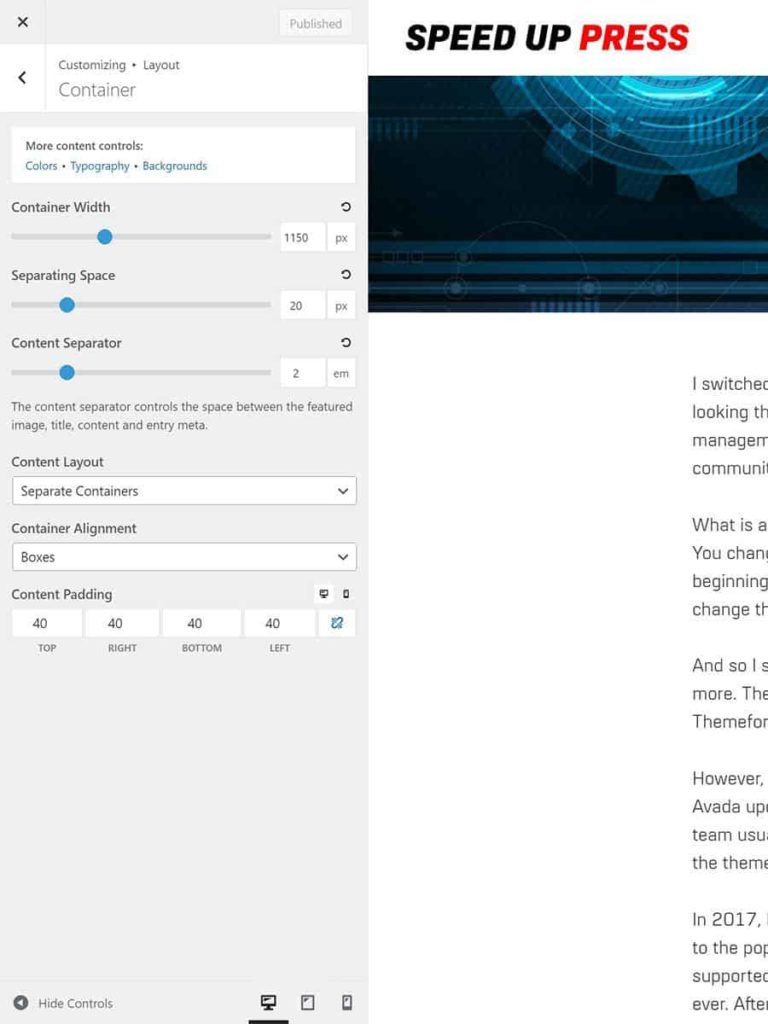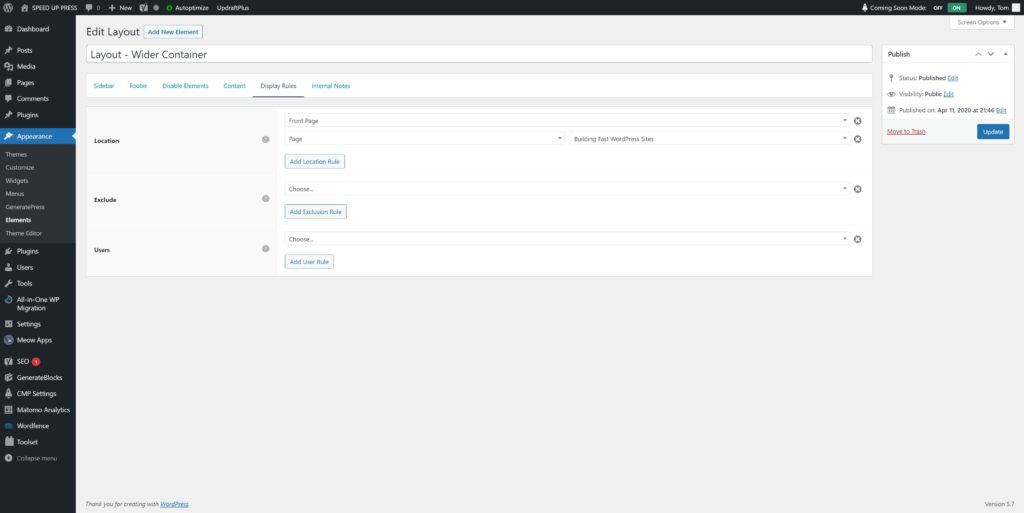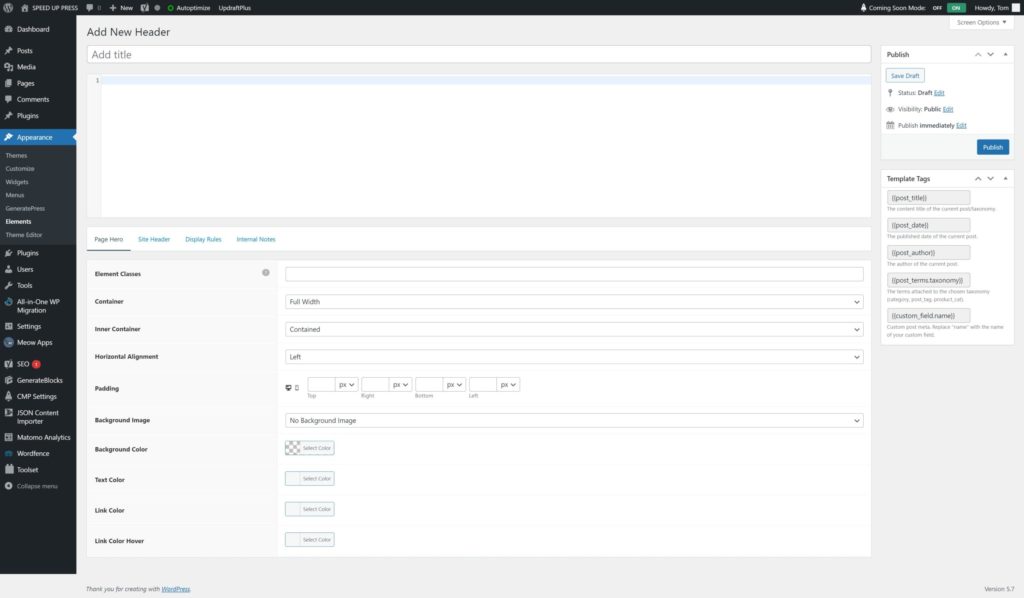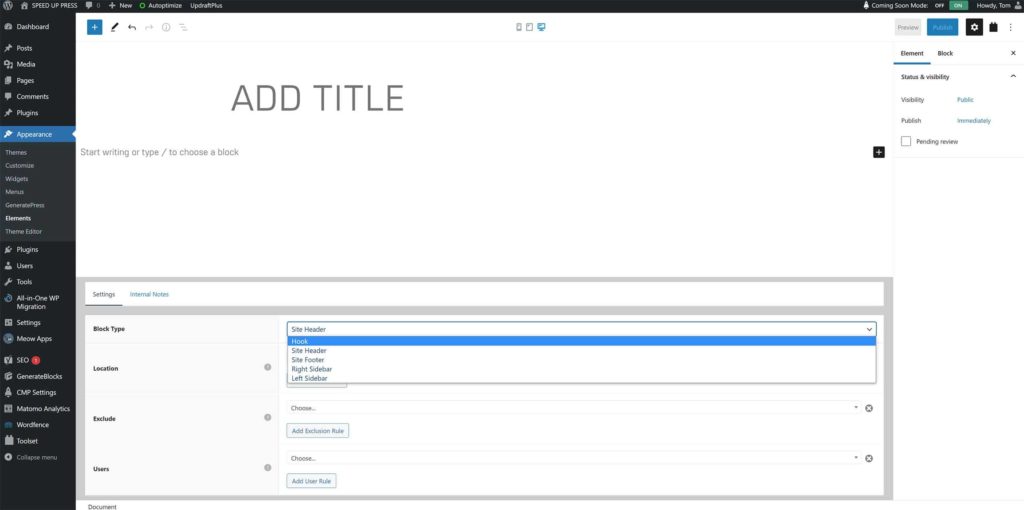I switched from Drupal to WordPress around 2013 and one of the reasons behind this decision was the abundance of great-looking themes for WordPress. Even though out of the box, right after the installation, Drupal is a much more advanced content management system, by 2013 it was clear to me that the ecosystem around WordPress was light years ahead of the Drupal community.
What is a theme? A theme in the world of content management systems is an extension which defines the look of your website. You change the theme and the look of your website changes with a flick of a switch. At least, this is the way it was in the beginning, this is what I had thought until a few years ago and this is what millions of newbies still think. Well, yes, a theme does change the look of your website, but there is much more to that, at least as WordPress themes are concerned.
And so I started to purchase licenses for WordPress themes in 2013. Phlox (when it was still called Lotus), Avada, Bridge, X and more. They looked so great and shiny in the demos. Avada was (and still is at the time of writing) the best-selling theme at Themeforest. It has so many gimmicks features and it is trusted by so many customers! All these people can’t be wrong!
However, after some time, I started to think that perhaps I might not need all these features gimmicks. Every once and then, an Avada update was breaking something in my website. Yes, the same usually happened to other people and their great support team usually came up with a solution and released a patch. At the same time, I came to a conclusion that usually I try to simplify the theme and don’t really use most of its “features”.
In 2017, I discovered the GeneratePress theme. The theme’s demo website from that time looked really spartan, compared e.g. to the popular themes from Themeforest. Therefore, GeneratePress seemed an underdog to me at first. But the theme supported all possible page layouts that I could think of, so I gave it a chance. And it was one of my best web-design decisions ever. After a short time, I purchased the premium version. In this review, I will try to explain why I think that GeneratePress is such a good theme.
The Versatility of Generatepress
GeneratePress turned out to be a simple theme, but at the same time flexible and powerful. I was able to achieve practically everything I needed to achieve in terms of design and layouts. Since I have started to use GeneratePress I haven’t had headaches caused by buggy updates or conflicts with plugins. Yes, sometimes you need to add custom code to achieve certain functionality or look. But the theme is really well-documented, so in most cases you will probably find that somebody else has already asked your question in the official support forum and there is already a solution. If not, the support staff is very professional and responsive. If you start a new support thread in the forum, soon somebody will assist you. There is also a very active Facebook group.
After installation, GeneratePress will give you a minimalistic, clean look. That should not scare potential users off, as you can achieve practically any look with some work. GeneratePress gives you a great foundation for any kind of WordPress project. If you are not happy with your web design skills, you can use one of the ready templates in the Site Library (assuming you have the premium version of the theme).
There are thousands of WordPress themes with great-looking demos. The shiny demos are supposed to attract inexperienced WordPress users. Under the hood, though, many of these themes are surprisingly crude and bloated. In GeneratePress, the focus is on the site structure and the quality of code, and not on a particular design. It is your job as a web designer to design the site and with GeneratePress you receive the perfect tool to build advanced, fast WordPress websites.




WordPress beginners may think that the theme creates “the look” of the website and it’s all about design. Well, not really. At least not anymore. If you take a look at some of the popular themes at ThemeForest you will notice that they have lots and lots of demos. Some of them have literally hundreds of demos. And each demo looks completely different than the previous one, even if it is created with the same theme. So, how can a theme be about the design? A modern and advanced WordPress theme is more about the structure rather than about the design.
Free or Premium?
GeneratePress is a freemium theme. The free version is available from the official WordPress repository. Is the free version usable? Yes, it is. However, to get the most out of GeneratePress you definitely should purchase the premium version. It is available as a companion plugin from the developer’s website.
The GP Premium plugin adds a number of useful features, for example, additional typography, colors, spacing options, or the ability to disable certain things on specific posts or pages. Thanks to the modularity of the theme, it is possible to activate only the premium features which you actually need and deactivate the rest. But the killer feature, in my opinion are “Elements“. They are incredibly useful and convenient, simply great!
GeneratePress Elements
At the time of writing, there are four types of Elements in GeneratePress Premium: hooks, blocks, layouts and site headers. Under the hood, Elements are WordPress custom post types. To create a new element you use the familiar, standard WordPress interface. Elements also use WordPress conditionals, which allows you to easily display them in specific areas of your site. But you don’t need to write these conditionals in PHP, there is a simple and convenient GUI for that.
Hooks
Hooks are pieces of code that can be inserted into a specific regions or sections of your website, for example, header, content, sidebar of footer. You can control where your hooks appear. They can appear on all URLs, or only on certain pages, post belonging to specific categories, etc. The placement is done through a very convenient GUI.
Hooks can contain CSS, HTML, PHP or shortcodes, the sky is the limit. While several other good themes also offer hooks, I like the way they are set up in GeneratePress. When you are entering CSS in a hook, you will notice automated code-highlighting and autocompleting suggestions. For example, if you start typing: “text-“, the autocompletion suggestions will be valid CSS declarations as “text-align:”, “text-shadow”, etc. This autocompletion mechanism and code highlighting provided by the CodeMirror script greatly speed up entering custom CSS or javascript.
If I need some CSS only on specific post types, or in archives, I usually create a hook and display it only on URLs where it is required. One of frequent suggestions in Google’s Page Speed Insights is “remove unused CSS” and hooks are a simple way of achieving that.
Layouts
The Layout Elements are self-explanatory. Yes, they page layouts. What makes them very useful is that you can assign them to specific content types (custom post types), taxonomies (e.g. categories, tags, etc.) or archive pages. They provide a simple GUI for the native WordPress conditional system.
The Layout Element allows you to specify, for example, if sidebars should be displayed in the specified areas of your site, how many footer widget columns should be displayed or the content area width. You can also disable certain items, for example, the post/page title, site header, footer or the featured image. The ability to do it quickly, conditionally and through a simple GUI is a great time-saver.



Site Headers
The Site Header Element, as you might have expected, allows you to set up alternative headers for various areas of your website, which may be quite useful if your site has a complex structure. This Element uses the same conditional logic as the other Elements.



The Site Header Element in the current versions of GeneratePress Premium replaced the Page Header feature used a few years ago. The legacy Page Headers didn’t disappear completely, as the theme preserves backwards compatibility. They are still visible on sites which used the feature in the past.
Block Elements
This type of elements is a later addition to the Elements system in GeneratePress Premium. What makes it interesting is that it makes use of the new WordPress editor, a.k.a. block editor or Gutenberg. What makes it even better is that you can conditionally replace the default headers, sidebars and footers with these elements. This way you can, for example, display targeted ads on post belonging to a specific category or other taxonomy. Very useful.
Recently, the developer added the possibility to create Content Templates with Block Elements. This feature is not a replacement for dedicated, advanced plugins, as e.g. the Toolset or Metabox suites. However, for simple websites, it may be good enough and will allow you to create post templates in a quick and easy way.
Proven Track Record
When you choose an extension for your WordPress website, be it a plugin or a theme, the track record of the developer is an important thing to consider. While some newcomers certainly can deliver fantastic products, knowing that the theme or plugin comes from an established and respected developer will always give you a peace of mind.
The Lead Developer of GeneratePress is Tom Usborne, who has also developed several quality plugins that have received great reviews from the WordPress community: WP Show Posts, Simple CSS, Lightweight Social Icons, Lightweight Grid Columns and GenerateBlocks. I have used or tested all of them, and have found out that they have two things in common: they are indeed lightweight and they simply work.
As all these plugins are either free or offer quite a generous free tier, it proves that the developer doesn’t focus his efforts on making a quick buck, but contributes greatly to the WordPress ecosystem and is a respected figure in the WordPress community.
As for the GeneratePress theme itself, the most telling are reviews and ratings from actual users in the WordPress repository. I think these reviews say everything:
- Theme name:GeneratePress
- Total downloads:(all versions)
- Active installations:over
- Last updated:2024-02-06
- Current version:3.4.0
- Minimum WordPress version:5.2
- Minimum PHP version:7.4
- Number of reviews:1406
- Review score:100/100
- ★ ★ ★ ★ ★1379
- ★ ★ ★ ★13
- ★ ★ ★4
- ★ ★1
- ★9
Theme information and stats are provided by the official WordPress.org API.
Summary
Strengths:
- Super-fast performance.
- Lightweight and clean code. Conflicts with third-party plugins are extremely unlikely.
- The theme is “design-agnostic”, which makes it a perfect choice for all kinds of projects.
- The Elements system makes the theme a great foundation not only for simple blogs, but also for more advanced projects with more complex structure.
- Excellent documentation. Most of the questions which you might have, have been asked by someone else and there are answers in the official support forum. Lots of snippets that will help you tweak your site.
- Very large user base. The theme has also a very active user community in the official Facebook group.
- Excellent support. The quality of the support can be easily verified by visiting the theme’s support forum.
- Updates are generally very well-tested and thanks to the theme’s clean and minimal code, they don’t cause any significant problems, as it is sometimes the case with some themes from Themeforest.
- Constant development and ongoing improvements.
Weaknesses:
- Header setup through the Customizer could be more intuitive and could offer, e.g. transparent fixed headers with alternative logos through the GUI. The guys from KadenceWP have got it right!
- The interface for adding new Elements could be improved, but that is really nitpicking from my side… and it has been already improved in GP Premium 2.0!
Conclusion
GeneratePress belongs to the fastest and best-coded WordPress themes currently available in the market. I have witnessed its evolution since 2017 and I know that the developer constantly improves what is already a great theme. The ratings in the official WordPress repository don’t lie. This is the real deal.
Should you use the free version of GeneratePress or the premium one? If you are serious about building websites and would like to grow in this field, then definitely the premium version. If you only want to run a very simple blog, then the free version might be sufficient, although not as powerful as the premium one.
The pricing model has evolved over the years. If you see your future in web design or web development, then securing a lifetime licence for multiple websites is a no-brainer. This way, you’ll be insulated from possible price increases or pricing model changes in the future.
When I started to use GeneratePress, lifetime licences were unavailable, so I paid a yearly subscription fee. When the developer offered lifetime licenses again, I didn’t hesitate and purchased one. I also have lifetime licences for Genesis, Kadence and a number of themes from Themeforest, but GeneratePress is my favorite theme. Needless to say that this website runs also on GeneratePress.




